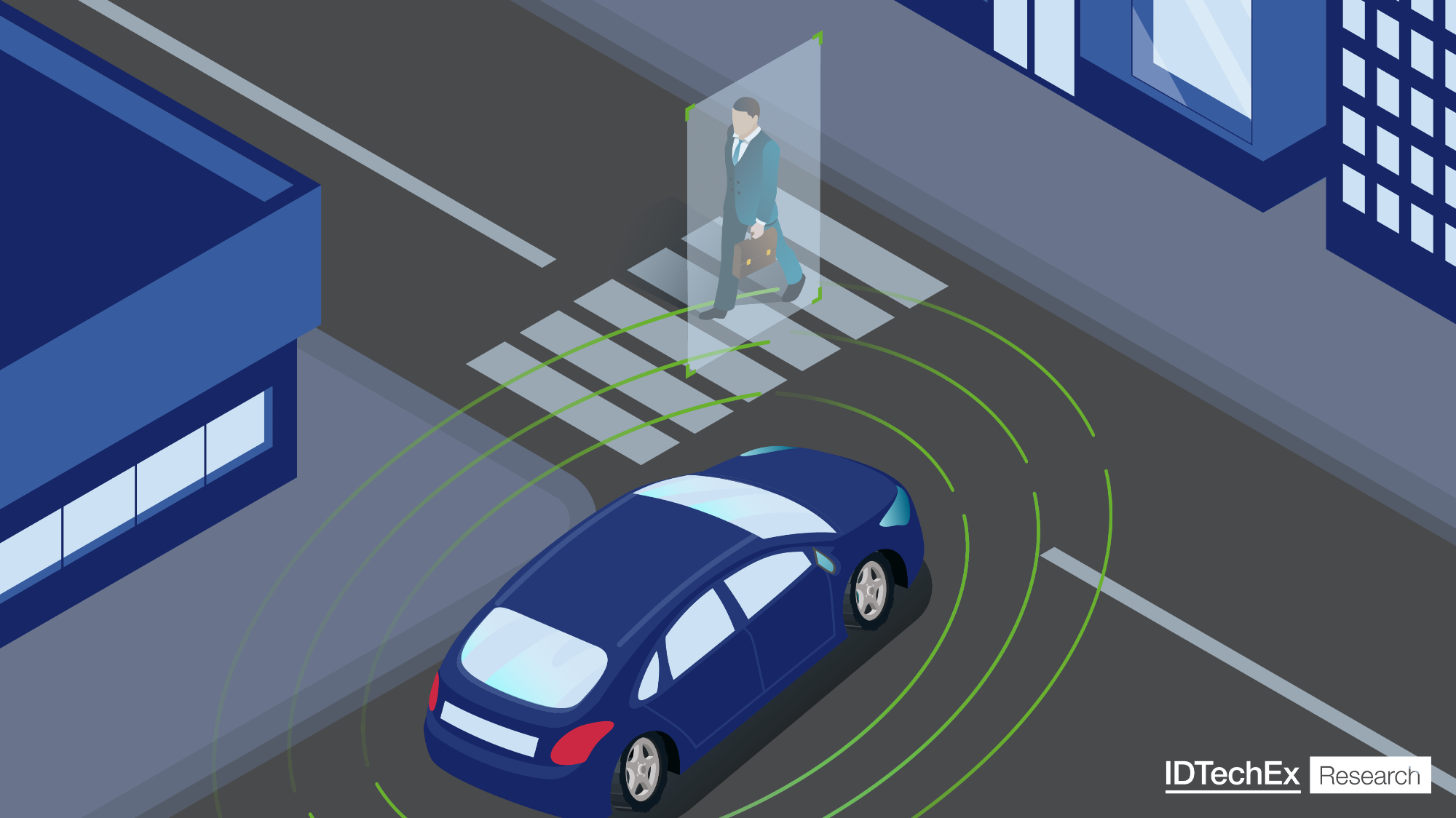Radars are already cemented into the automotive market as they provide popular ADAS features such as adaptive cruise control (ACC) and blind spot detection (BSD). Despite their near ubiquitous presence in vehicles, IDTechEx’s new report “Automotive Radar 2024-2044: Forecast, Technologies, Applications” finds that there is still large growth potential for this sensor, mostly driven by new opportunities for short-range radars.

Image Credit: IDTechEx
The analysis performed in IDTechEx’s new report finds that approximately 70% of new vehicles in 2022 were shipped with ACC or automatic emergency braking (AEB). These typically use long-range and high-performance front-facing radar. With 70% of the market already using a front radar, there is little room for additional growth, but short-range radars for applications like BSD currently have far less penetration. IDTechEx’s new report “Automotive Radar 2024-2044: Forecast, Technologies, Applications” finds that only ~30% of new vehicles in 2022 were shipped with BSD systems. With advanced driver assistance systems (ADAS) such as BSD booming in popularity, there is the potential for the short-range radar market to more than triple in size over the coming years.
Not only will the short-range radar market grow from the wider adoption of existing ADAS technologies such as BSD, but new ones are emerging that require even more radars per vehicle. Systems like lane change assistance, junction pedestrian automatic emergency braking, and others are at the cutting edge of ADAS technologies and can require complete 360˚ radar coverage provided by at least four short-range radars. This is known as a radar cocoon, and it creates an all-encompassing monitored and protected region around the vehicle. The emergence of these technologies provides another massive growth opportunity for radar, with significantly more units being required per car.
Radar cocooning is also something that IDTechEx has observed for vehicles that are targeting level 3 autonomous driving approval. Level 3 means that the driver can disengage from the task of driving and requires a comprehensive suite of sensors for the vehicle to maintain diligent awareness of its surroundings. So far, the Honda Legend, Mercedes S-Class, and EQS have received approval for level 3 driving in some regions, and all of these use four corner radars, creating a radar cocoon. BMW is currently working towards level 3 certification of its 7-series and i7, and IDTechEx believes that this means level 3 technologies will be heading towards mainstream adoption over the next decade or so, thus creating more growth of short-range radar markets.
With one front radar and four side radars, five might sound like a lot of radars per vehicle. But this is small when compared to some of the robotaxis in testing. Robotaxis are designed for autonomous MaaS (mobility as a service), and they will be transporting people with no one behind the steering wheel and likely without a licensed driver in the car. As such, they need a very robust sensor suite that can deal with many different weather and lighting conditions and can even carry on with one or multiple sensor failures. IDTechEx’s research has shown that, on average, these vehicles carry more than ten radars each. While these vehicles will not dominate the radar market, they are just another example of how the automotive radar market can expect to see continued growth over the next two decades.
Despite IDTechEx’s report “Automotive Radar 2024-2044: Forecast, Technologies, Applications” finding that short-range radars have the most growth potential, it also highlights the changing demands for front-facing radars. With autonomous technologies coming to fruition, the performance demands for front radar keep increasing, with more range and better imaging potential being key requirements for future technologies.
Radar is already well established in the automotive industry, with a market value in 2022 of US$8 billion. However, with all the growth opportunities discussed here, IDTechEx predicts continued and healthy growth in this market, with a 10-year CAGR of 6.9%.
Upcoming Free-to-Attend Webinar - The Future of Automotive Radar
Dr James Jeffs, Senior Technology Analyst at IDTechEx and author of this article, will be presenting a free-to-attend webinar on the topic on Thursday 2 November 2023 - The Future of Automotive Radar. This webinar explores some of the development avenues that are being explored to address the ever-growing demands of radar. It covers software, semiconductor technologies, new semiconductor packaging options, system architectures and more.